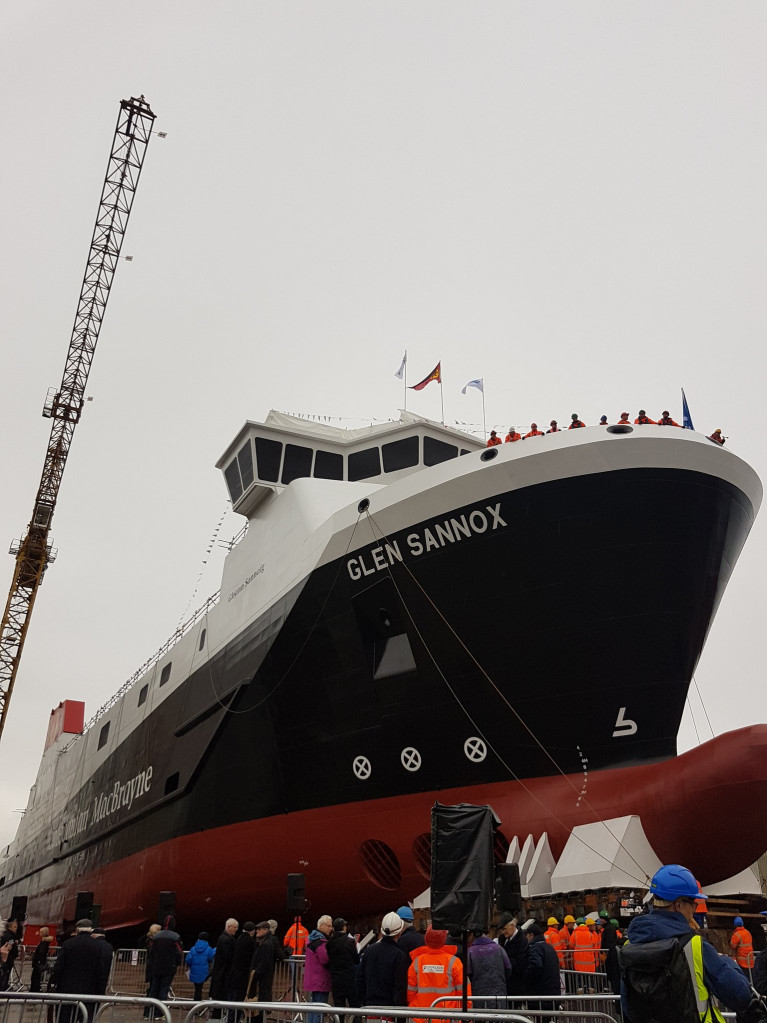Displaying items by tag: Ferry Fiasco
Environmentally Friendly Scots Fiasco Ferry Cannot Initially Run 'Green' Due to Fault
One of the Scottish ferries at the centre of a shipyard ferry fiasco could see it lose its green credentials following a new fault.
The Ferguson Marine shipyard which was nationalised in 2019, has confirmed that further issues with the first of two newbuild ferries, the MV Glen Sannox means it will not initially run on liquefied natural gas (LNG).
Instead the 102m ferry for the Ardrossan-Brodick (Isle of Arran) route will be operating on a diesel, single fuel system for at least the first nine months of its service on the Clyde.
Following this period, the twin funnel ferry may then have to be taken out of service to test its LNG system.
Graham Simpson, the Scottish Conservative shadow transport minister said: “This revelation just adds to the shambles around the building of this vessel which was supposed to be climate friendly."
Both Glen Sannox and the second newbuilding (Hull 802) were hailed as a step towards a greener future for Caledonian MacBrayne (CalMac) Scotland's state owned ferry fleet, as they were to be the first ships built in the UK capable of running off LNG and marine gas oil.
The twin duel-fuel powered ferries were seen as significantly cleaner in addition they would help to reduce emissions levels to meet ambitious Scottish Government targets.
More the HeraldScotland reports on this development at the Port Glasgow shipyard.
Scottish Ministers have been asked to "come clean" as fears grow over the collapse of the nationalised shipyard firm at the centre of the ferry-building fiasco, reports The Herald.
It comes after The Herald On Sunday, revealed the Scottish Government-controlled owners of Scotland’s lifeline ferries flagged concern of a risk of administration for the shipyard company at the centre of the vessel building fiasco.
An analysis from former managers of the Port Glasgow shipyard at the centre of a ferry-building fiasco referred to “inevitable failure for the business” because of the way it was being run.
Ferguson Marine (Port Glasgow) Holdings (FMPG), which is controlled by ministers and supported by taxpayer cash, made a £100 million loss in its first four months of Scottish Government control (that took place in 2019).
Two previous companies running the Ferguson Marine shipyard have gone into insolvency in the past seven years.
Auditors for the state-owned FMPG have said there are no guarantees that it will continue to operate in the future although directors of FMPG have signed off recent financial statements on a “going concern” basis.
Scottish Conservative shadow cabinet secretary for Net Zero, Energy and Transport, Liam Kerr MSP, said: “This latest sorry development suggests there’s a fresh risk of collapse at Ferguson Marine.
“SNP ministers must come clean about their plans for the future of this company.
“Costs on ferries have already soared and the yard itself has lurched from one financial problem to another in recent years.
“The public are losing a fortune. The SNP Government has to deliver a plan that puts Ferguson Marine on a sustainable long-term footing.”
Questions over FMPG’s status have come in internal discussions held by the owners and procurers of Scotland’s ferry fleet, Caledonian Maritime Assets Limited (CMAL), in considering continuing risks to them over failures in contracts to build two lifeline ferries.
The newspaper has much on this story.
Ferry 'Fiasco' As Scottish Ministers Sued by Their Own Company
The Scottish National Party (SNP) Government is facing the “fiasco” of being sued by its own ferry company, writes The Herald.
Connectivity and Islands minister Paul Wheelhouse today confirmed that the state-owned ferry operator CalMac had raised legal proceedings over a disputed £450m contract as Afloat previously reported (see end of article).
The Government said it would work to "maintain continuity of service and full connectivity to and from the Northern Isles".
CalMac is challenging a decision by Scottish Ministers to award the Northern Isles Ferry service to commercial rival Serco Limited in September.
For further reading on the ferry fiasco contract, click here.





























































